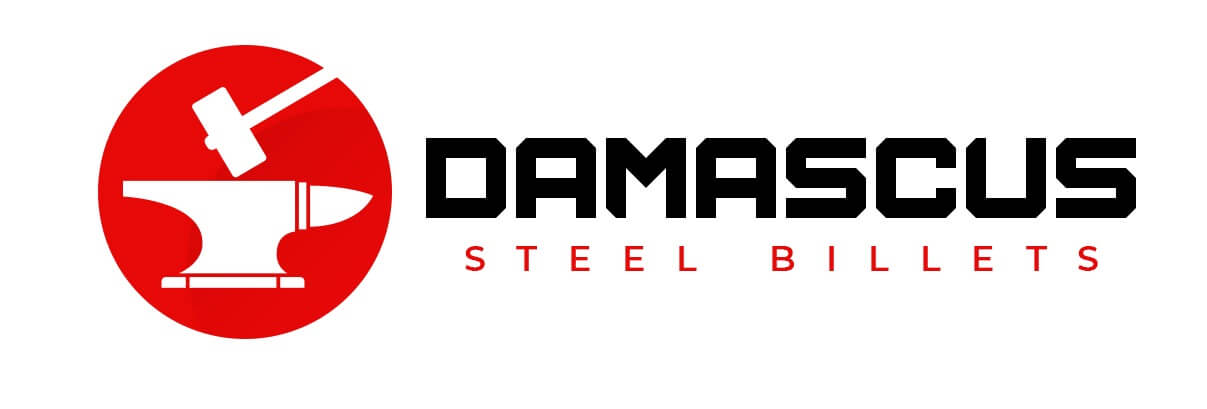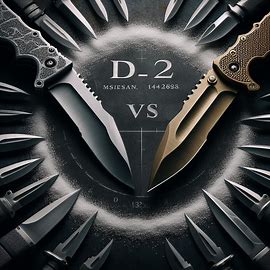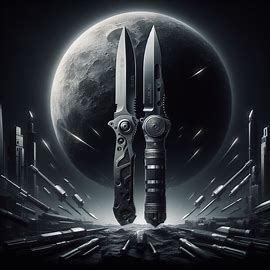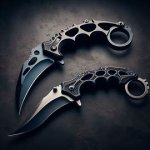Blade steel is king when it comes to high-end knives. While there is no shortage of steel selections for knife fans and pros, two high-performance stainless steel giants are S35VN and S30V. To assist you in choosing the best steel for your cutting needs, this detailed article will examine the distinctions between these two alloys.
S35VN vs S30V
A Foundational Knowledge of S30V
Composition
One martensitic stainless steel that stands out for its remarkable edge retention is S30V, also called CPM S30V. A high carbon content of 1.45% is a key component of its composition, guaranteeing a strong and durable edge. S30V is a common choice for knives for extended outdoor usage because of its high corrosion resistance and 14% chromium concentration.
Edge Retention
Unparalleled edge retention is one of the most notable characteristics of S30V. Be it heavy-duty cutting or just needing a trustworthy everyday carry, blades constructed of S30V steel do an excellent job of keeping their edge.
Protection against Corrosion
S30V has great corrosion resistance thanks to its high chromium concentration. This quality makes the steel more resistant to wear and tear, making it an ideal material for blades used in various environments.
Toughness
Some users have noticed that S30V is more prone to chipping and breaking in specific settings, despite its reputation for outstanding edge retention. The S35VN, its immediate successor, considers some of these issues.
Significant Progress with S35VN
Composition
An improved version of S30V, S35VN has a different chemical make-up that brings out new features. An improvement in machinability is a result of the minor reduction of the carbon content to 1.40%.
Additionally, the vanadium concentration has been reduced to 3%, while the chromium content remains significantly high at 14%.
Strengthened Durability
Improving toughness without compromising other important qualities was a primary objective in producing S35VN. This steel’s chipping and breaking resistance is far higher than that of certain S30V blades, which is a major improvement.
Machinability
Not only does S35VN have better machinability thanks to its lower carbon content, but it is also marginally simpler to sharpen than its predecessor. Users who value a blade that can be effortlessly sharpened and maintained may find this feature appealing.
S35VN vs. S30V
Edge Retention Comparison
Both steels are great at retaining edges, although S30V is somewhat better because of the increased carbon content. The improved durability of S35VN sways some consumers, while the difference in real-world situations may be small.
Protection against Corrosion
The high chromium concentration in S30V and S35VN makes them very corrosion-resistant. Knives crafted from either metal will survive a wide range of environments without rusting or dulling.
Toughness
In this respect, S35VN excels. This steel is perfect for knives that are put through their paces since the changes to its composition make it more resistant to chipping and breaking.
Sharpening Ease
S35VN is often considered simpler to sharpen than S30V because of its lower carbon concentration. This is important for people who value convenience regarding sharpening and maintenance.
| Feature | S35VN | S30V |
| Carbon Content | 1.40% | 1.45% |
| Chromium Content | 14% | 14% |
| Vanadium Content | 3% | 4% |
| Composition Modification | Designed for enhanced toughness and machinability | Known for exceptional edge retention |
| Ease of Sharpening | Slightly easier due to lower carbon content | May be slightly more challenging to sharpen |
| Blade Toughness | Improved resistance to chipping and cracking | Can be more susceptible to chipping and cracking |
| Blade Edge Retention | Excellent | Exceptional |
| Corrosion Resistance | Excellent | Excellent |
| Machinability | Improved | Standard |
| Wear Resistance | Maintains a sharp edge for extended periods | Excellent wear resistance |
| Edge Stability | Enhanced | High |
| Edge Retention | Very Good to Excellent | Excellent |
| Sharpness | Easy to maintain and hone | Requires careful maintenance |
| Blade Maintenance | Easier due to improved machinability | Requires proper sharpening techniques |
| Price Point | Typically found in higher-end knives | Generally considered a premium steel |
| Blade Applications | Versatile, suitable for various cutting tasks | Widely used in a variety of knife applications |
| Manufacturing | Popular among custom knife makers | Widely used by major knife manufacturers |
| Market Availability | Increasingly common in production knives | Widely available in premium knife models |
| User Preferences | Appeals to those prioritizing toughness | Attracts users who emphasize edge retention |
| Production Popularity | Gaining popularity as a preferred steel | Established as a reliable high-end steel |
| Blade Design Flexibility | Allows for a range of designs | Flexible design options |
| Resharpening Frequency | May require less frequent sharpening | Holds an edge well over time |
| Blade Chip Resistance | Improved | Adequate |
| Edge Chipping | More resistant due to composition tweaks | Can occur in certain situations |
| Blade Strength | High strength with enhanced toughness | High strength with good toughness |
| Field Performance | Excellent for a variety of cutting tasks | Trusted for diverse cutting applications |
| Availability in Production Knives | Increasingly common | Widely used in many premium knife models |
| Blade Edge Stability | Improved | Stable and reliable |
| Custom Knife Usage | Popular among custom knife makers | Frequently chosen for custom blades |
| Response to Heat Treatment | Responsive | Responsive |
| Deployment in Tactical Knives | Commonly used in high-end tactical knives | A popular choice for tactical applications |
| Resistance to Rolling | Enhanced resistance due to composition tweaks | Good resistance |
| Blade Flexibility | Balanced flexibility | Good flexibility |
| User Feedback | Positive reviews for improved toughness | Praised for exceptional edge retention |
| Heat Treatment Versatility | Accommodates various heat treatments | Responsive to different heat treatments |
| Blade Cutting Performance | Excellent for a wide range of cutting tasks | Well-suited for various cutting needs |
| Blade Stability | Improved stability under stress | Stable under various cutting conditions |
| Popularity in Folding Knives | Gaining popularity | Widely used in folding knife designs |
| Resistance to Wear | High resistance to wear over time | Maintains sharpness even with regular use |
| Suitability for Bushcraft | Reliable choice for bushcraft applications | Holds up well in bushcraft scenarios |
| Tactical Use Suitability | Well-suited for tactical applications | Trusted in tactical situations |
| Maintenance Frequency | May require less frequent maintenance | Regular maintenance may be necessary |
| Heat Treatment Control | Responsive to precise heat treatment | Allows for effective heat treatment control |
| Versatility in Knife Designs | Accommodates various designs | Used in a wide array of knife designs |
| Aging and Corrosion | Shows resistance to aging and corrosion | Resistant to aging and corrosion |
| Field Durability | Improved durability in challenging conditions | Demonstrates durability in various environments |
| Overall Performance | Balanced performance with an emphasis on toughness | Emphasis on exceptional edge retention |
| Blade Finish Options | Various finish options available | Multiple finish options for customization |
FAQS
Which Steel is Better for Everyday Carry?
The S30V and the S35VN are both great options for daily carry. S30V might be better if edge retention is more important to you. On the other hand, S35VN can be a better choice if you prioritize increased hardness and easy sharpening.
Are These Steels Suitable for Outdoor Activities?
In a word, yes. Corrosion resistance and outstanding edge retention are two characteristics shared by S30V and S35VN. Because of their resilience and resilience, they are perfect for use as knives in camping, outdoor pursuits, and survival situations.
Can I Sharpen These Steels at Home?
Sharpening S30V and S35VN knives in the comfort of your home is possible. Although S35VN is a bit simpler to sharpen than S35C owing to its lower carbon content, both steels are responsive to good sharpening methods.
What Factors Should I Consider When Choosing Between S30V and S35VN?
Consider the knife’s intended application and your priorities for edge retention, hardness, and sharpening simplicity. Consider S35VN if you’re looking for a material that combines these qualities with increased durability. S30V would be a better fit if you’re looking for maximum edge retention.
In summary,
S35VN and S30V are strong candidates in the never-ending search for the ideal blade. Ultimately, deciding which one best suits your requirements and tastes is up to you. You can’t go wrong with either steel if you value toughness, corrosion resistance, edge retention, or ease of sharpening. With this information, you can choose the perfect steel for all your cutting adventures, ensuring your blade is more than just a tool—it’s a trustworthy friend.






